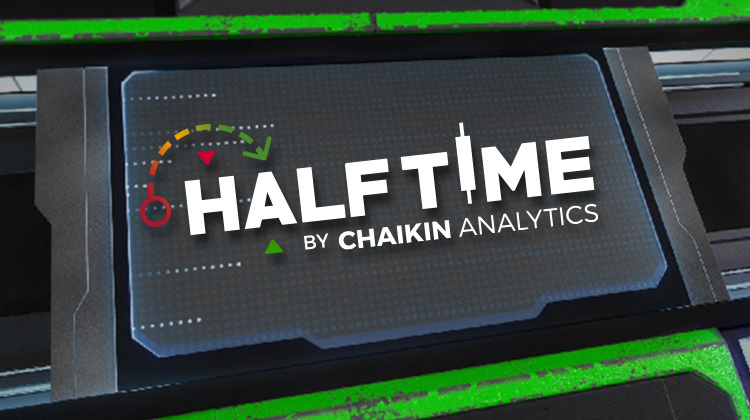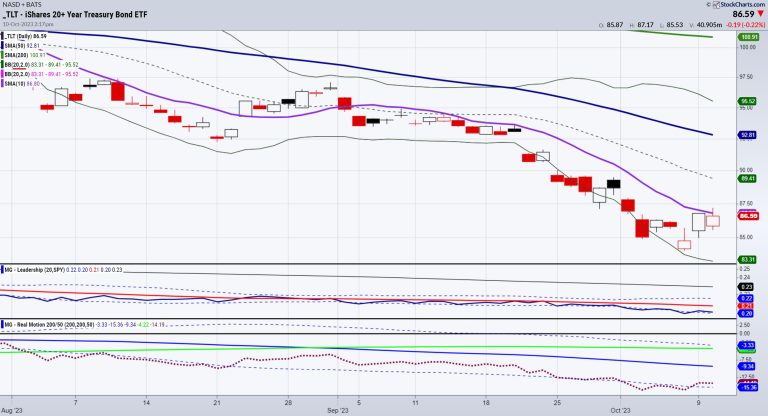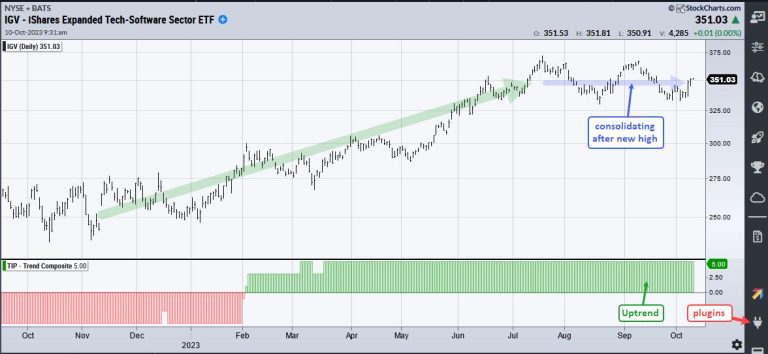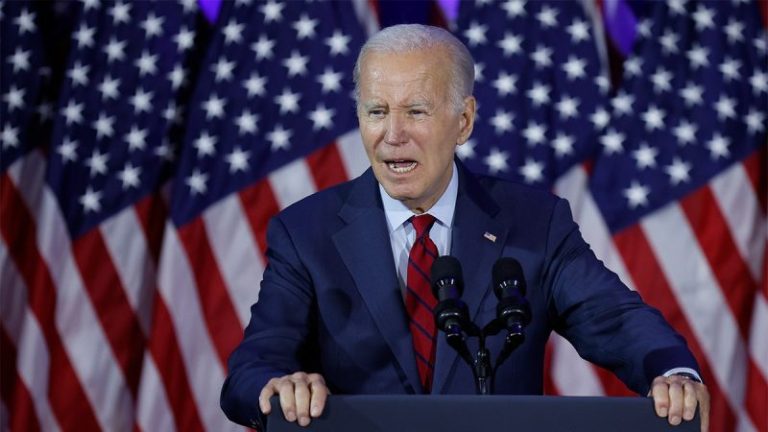A stock market pullback often makes investors question what they should be doing with their investments. Throw in geopolitical tensions, and the uncertainty grows exponentially. But when a pullback ends, it opens up the opportunity to pick up stocks, exchange-traded funds (ETFs), or any other securities for a lower price. And there’s also the potential to ride a decent rally.
But not all stocks are created equal. You can’t just buy any stock and expect it to move high enough for a decent return. You must still do your due diligence and identify stocks with the momentum to rally enough to make it worth your time and money.
Semiconductors are one of the sub-sectors that have driven the rally from the October 2022 low to the July 2023 high. Bring up a chart of the semiconductor sub-industry, such as the Philadelphia Semiconductor Index ($SOX), and you’ll notice that the index is battling with the downward-sloping trendline. A break above that trendline would be a positive for semiconductor stocks.
CHART 1: PHILADELPHIA SEMICONDUCTOR INDEX ($SOX) COULD BREAK OUT ABOVE ITS DOWNWARD-SLOPING TRENDLINE. A breakout would be positive for semiconductor stocks.Chart source: StockCharts.com. For educational purposes.Several semiconductor stocks are showing signs of rotation, and one that shouldn’t be ignored is Advanced Micro Devices (ticker symbol: AMD).
Analyzing AMD Stock
The monthly chart of AMD shows a clear uptrend in the stock since 2016. During the October 2022 low, price dipped below its 50-month simple moving average (SMA), but since then, AMD stock has managed to hold above it. It’s now holding on to the support of its 21-month exponential moving average (EMA). So, overall, the trend is upward bound.
CHART 2: MONTHLY CHART OF AMD STOCK. Over the long term, AMD has been trending higher. It pulled back at the end of 2022, but the downtrend has reversed.Chart source: StockCharts.com. For educational purposes.
The weekly chart shows an interesting picture. While the overall trend is lower, the price action is displaying the formation of a bullish flag pattern. Price is breaking above this flag, which means there’s a chance the stock could come close to its November 2021 high. But before getting there, it has to break above the trendline that connects the November 2021 high and the high at the beginning of the flag pattern.
CHART 3: WEEKLY CHART OF AMD. The bullish flag pattern is helpful in projecting a price target for AMD after a breakout.Chart source: StockCharts.com. For educational purposes.
Let’s shift to the daily chart and see if it aligns with the longer-term charts.
CHART 4: CALCULATING PRICE TARGET FROM FLAG BREAKOUT. AMD’s stock price could go as high as around $162, close to its all-time high of $164.Chart source: StockCharts.com. For educational purposes.
The bull flag is clearer in the daily AMD stock chart, and price has broken out of the flag pattern. The pattern can be used to project how far AMD stock could rise. To estimate a price target after a flag breakout, calculate the distance between when the stock broke out of its last downtrend and the high of the flag pattern.
Returning to the weekly chart of AMD, the breakout from the last downtrend (purple dashed line on the weekly chart) took place in January 2023 at around $75. So the distance from there to the high of the flag, which is around $130, is about $55. Add 55 to the price at the flag breakout—around $107—bringing you to a price target of around $162.
It’s also worth noting that the StockCharts Technical Ranking (SCTR) score has crossed above 70, which indicates the stock is showing strength and has room to run before it hits the 90+ levels of other semiconductor stocks, such as NVIDIA Corp. (ticker symbol: NVDA). The Relative Strength Index (RSI) is at around 60, indicating that momentum is strong but hasn’t reached levels that make it excessively strong. And relative strength is also improving. All indicators suggest the stock has room to run.
The first resistance AMD’s stock price could hit would be the 100-day moving average, which isn’t far off. A break above this moving average would bring it to the trendline in the monthly chart of around $120. Beyond that, the stock could reach the November high of around $164, which coincides with the flag pattern breakout price target.
Final Thoughts
If you get in relatively soon, AMD’s stock price could give you a return of over 50%. But that doesn’t mean it’ll be smooth sailing. Nothing is guaranteed in the stock market, especially since more geopolitical tensions have surfaced.
As always, watch overall market conditions, especially in the semiconductor industry. It’s a great indicator of the overall performance of the stock market. In addition, keep an eye on AMD’s SCTR score, the overall trend of AMD, and its performance against a benchmark such as the S&P 500.
If you buy shares of AMD at current levels and the stock moves in your favor, watch for excessive momentum. If you think the momentum is too high, sellers may dominate and bring the price down. If signs of strength weaken, you must diligently tighten your stops.
Disclaimer: This blog is for educational purposes only and should not be construed as financial advice. The ideas and strategies should never be used without first assessing your own personal and financial situation, or without consulting a financial professional.










